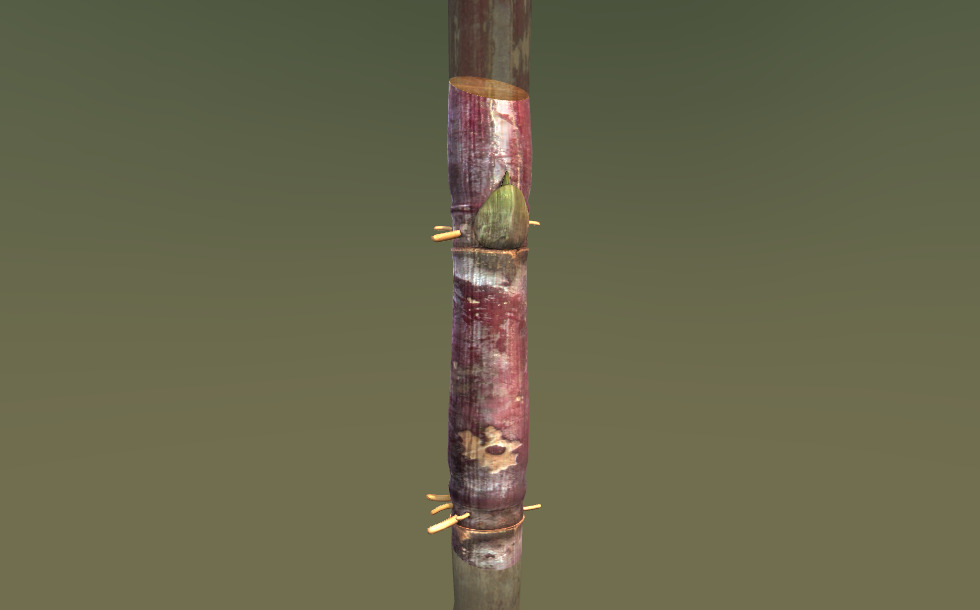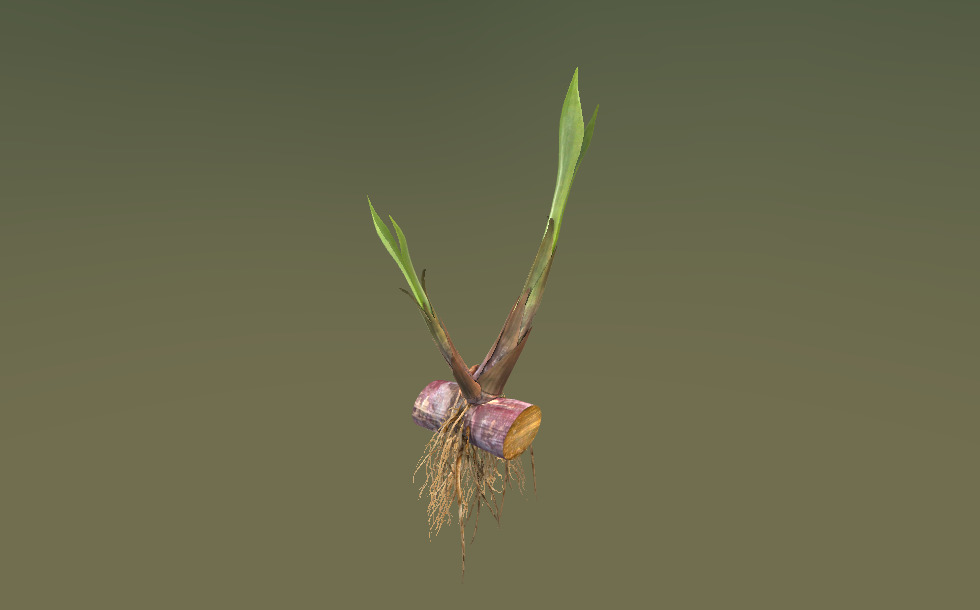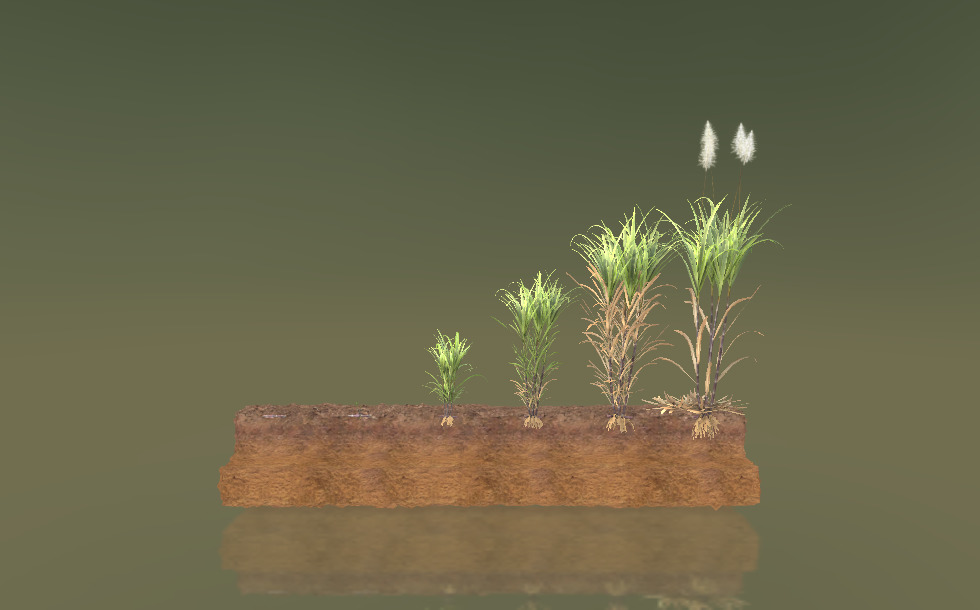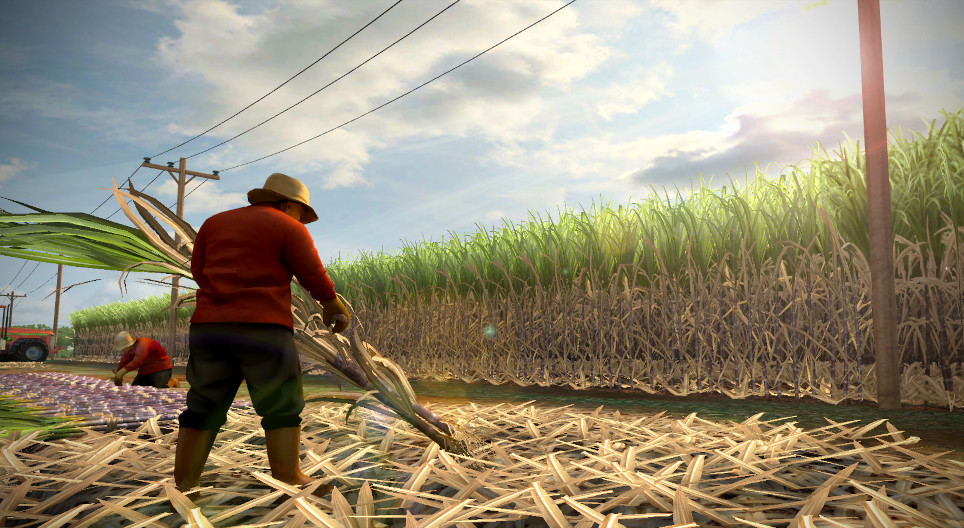Sugar cane
Sugar cane, cultivated in tropical or subtropical regions, is the primary raw material for sugar production.
5 – 12.年
mozaLink
/ウェブリンク
シーン

Plantation
Sugar cane is one of humankind's oldest cultivated plants, with its cultivation and use going back thousands of years. It originally came from New Guinea and spread gradually to the Pacific islands, Southeast Asia, then India and China. It reached Europe in the 10th–11th century.
The sugar cane plant is tall, perennial, and can grow to 4–6 metres. Several strong, unbranched stems grow from its base. The stem may be green, pinkish, or purple. The solid stem, which is divided by nodes, contains sugary sap. Cane juice differs from the juice of sugar beet in several ways. Cane juice has a more pleasant taste and smell, while its sugar content is lower, averaging 12–15%, compared to 16–17% in sugar beet. Its root system develops from rhizomes and remains close to the surface, forming dense roots in the upper soil layers. The long (30–60 cm), stem-sheathing leaves are arranged alternately at the nodes. The leaves have parallel veins and are sharp and serrated. Most leaves dry out by the time the sugar cane plant reaches maturation. The plant has a loose, silvery panicle.
Sugar cane is cultivated mainly in tropical and subtropical regions. Propagation usually takes place by stem cuttings, which contain at least one bud. The vegetation period of the sugar cane plant is 10–24 months.
Harvesting begins before the plant starts to flower. In the weeks before cutting, the dry lower leaves are removed and placed between the rows as ground cover, which reduces evaporation and increases the organic matter content in the soil. At harvest, the stem is cut as close to the ground as possible because the lower part of the plant has the highest concentration of sugar. This method also promotes the formation of suckers for the following year. Once cut, the stem begins to lose its sugar content quickly (by up to 30% within five days), so processing must start as soon as possible.
The main economic value of sugar cane lies in the saccharose (cane sugar) stored in its stem, which is processed into granulated sugar. An important by-product of the plant, molasses, is used for animal feed, alcohol production (for example, rum and industrial ethanol), and as a food additive. The dry fibre remaining after pressing, called bagasse, is used for bioenergy production, papermaking, and producing biodegradable materials. Extracts of the sugar cane plant are also utilised in the cosmetic and pharmaceutical industries for their antioxidant and anti-inflammatory effects.
About 70% of the world's sugar production comes from sugar cane. The largest producers are Brazil, India, and China.

Sugar cane plant

Stem

Germinating stem cutting

Vegetative propagation

Saccharose
Saccharose, sucrose, beet sugar, cane sugar C₁₂H₂₂O₁₁

Information
Molar mass: 342.32 g/mol
Melting point: 186 °C
Heat of combustion: -5,651 kJ/mol
Density: 1.588 g/cm³
Properties
Saccharose, also known as sucrose, beet sugar or cane sugar, is a white, odourless, sweet-tasting compound, which is well soluble in water. It is a disaccharide: the molecule is made up of an alpha-D-glucose molecule and a beta-D-fructose molecule linked with a 1,2 bond. When heated, sugar melts at 160 °C, turns yellow at 180–200 °C, then turns brown and forms caramel. Higher temperatures carbonise sugar. Saccharose does not produce positive test results for the silver mirror test; it is a non-reducing disaccharide.
Occurrence and production
Saccharose is present in small quantities in numerous plants (e.g. sweet corn, palm juice and dates), but sugar is only found in large quantities in sugar cane and sugar beet. These two plants are the raw material of sugar production in industrial quantities.
Uses
Its main area of use is the food industry, but it is also used in the production of plastics, proteins, fats, ethanol, ethylene, glycerol, explosives and softening agents.


